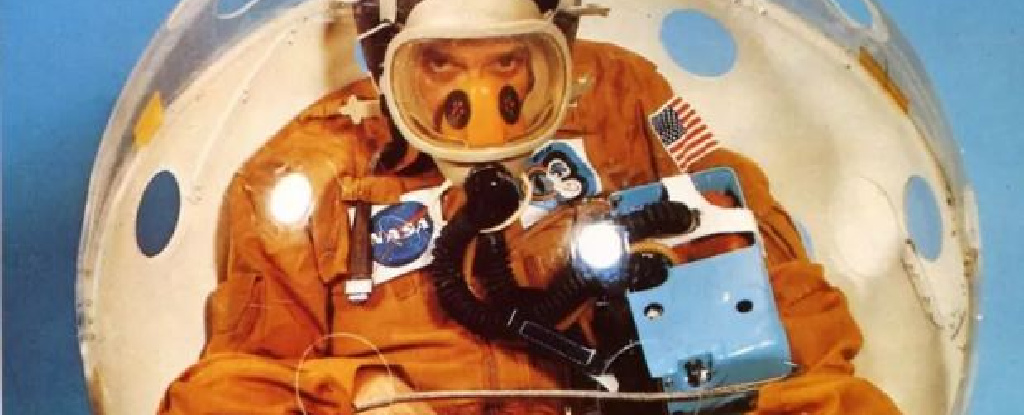Imagine being trapped inside a small sphere made of fabric with a tiny window and an air tank, suspended from the Canadarm. If the sphere moves, you will see the Earth, the damaged Space Shuttle and the Earth again. This is what NASA’s Personal Rescue Enclosure (PRE) was designed for. The PRE or rescue ball was intended to rescue a single astronaut from a damaged shuttle to a rescue shuttle in case of an emergency. However, NASA never sent it on any mission.
The Design of the Personal Rescue Enclosure
The PRE was a mere 0.33 cubic meters or 12 cubic feet in size, made of three layers of fabric: urethane, Kevlar, and an outer thermal layer. It had an entry and exit zipper and a tiny Lexan window for a single astronaut. It also held a carbon dioxide scrubber/oxygen supply that would last one hour. The PRE was designed to move with the Canadarm or along a line that connected the two shuttles.
The Purpose of the Personal Rescue Enclosure
Before the Challenger disaster, space shuttle crews did not wear space suits. The PRE was designed to be used in a scenario where there were not enough spacesuits for everyone. In the event of an accident, if there was enough time to launch a rescue shuttle, the PRE system would be used. The PRE would be tethered to the Space Shuttle until the airlock depressurized, then a suited astronaut from the rescue shuttle would transport the PRE and the astronaut inside to the rescue shuttle. NASA planned to move an entire crew from a damaged shuttle to a rescue shuttle in this way.
The Retirement of the Personal Rescue Enclosure
The PRE was abandoned before it could be put into use. The Space Shuttle Program changed everything and every person riding on the Space Shuttles was given a space suit. In retrospect, the PRE seems more like a brutal hazing ritual than emergency preparation. The thing zipped up on the outside only, the window was tiny, and the poor person being rescued was entirely at the mercy of another astronaut. Astronaut safety is paramount for NASA, and they’ve developed much better technologies to protect astronauts.
The Future of Astronaut Rescues
All astronauts working outside the ISS now wear the Simplified Aid For EVA Rescue (SAFER) system. It’s a jetpack that allows astronauts to return to the ISS if their tether fails or they become separated from the Canadarm 2 and Dextre. SAFER has been in use since 1994, and it’s a preferable alternative to being zipped up in a cloth bag like dirty laundry. Although the PRE was never used in space, it remains a testament to NASA’s commitment to astronaut safety. The agency continues to design and develop new technologies to ensure that future space missions are safe and successful.


Leave a Reply